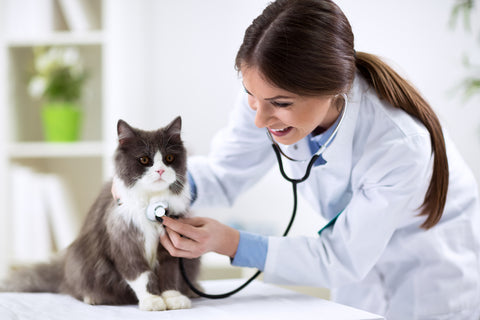
As we continue to grasp new knowledge and information in feline science, we drive the focus on Basepaws research initiatives which can help improve the understanding of feline biology and improve the health management of cats everywhere. Today, we are thrilled to announce our new research initiative - the Basepaws Feline Diabetes Mellitus (DM) Research Project!
Background information
Diabetes mellitus (DM), or simply diabetes, is a group of metabolic disorders in which blood sugar levels remain high for long periods of time. This occurs when there are insufficient levels of insulin produced in the body or the body isn’t responding properly to this hormone. To learn more about the nature, management and types of the disease please read our article on Feline Diabetes Mellitus.
The focus of our research initiative
In our research project, we are specifically focused on feline Type 2 diabetes, or Insulin Resistant Diabetes. This is the most common form of feline diabetes and it closely resembles the human Type 2 DM. Sadly, both in humans[1] and cats[2], the prevalence of this disease has been drastically increasing over the recent years. The development of Type 2 DM is influenced by a number of factors[3], but we are launching this initiative to aid the research of the genetic risk factors associated with this disease in cats.
In light of this, we are specifically looking for some marvelous furry friends diagnosed with Type 2 Diabetes Mellitus to join our program! All the cats who are accepted into our program will receive a FREE Basepaws CatKit and a lifetime subscription to all the upcoming updates to the DNA report. We are currently accepting applications from USA and Canada. To be accepted, your cat is required to meet the following criteria:
Inclusion criteria
- Your cat must be at least 7 years of age
- Your cat must have been diagnosed with Type 2 DM at least one year ago
- Your cat is currently prescribed insulin
- Your cat had a Fructosamine evaluation completed within the last year
- Your cat’s disease must be stable
- You must be willing to complete a survey about your cat’s physical traits
Exclusion criteria
- Your cat cannot be diagnosed with Acromegaly
- Your cat cannot be diagnosed with Hyperthyroidism
- Your cat cannot be diagnosed with Hyperadrenocorticism
Do you think your cat qualifies for our novel program? Send your application and join us on our journey to a better future for cats everywhere! And don't forget to spread the word! The faster we gather the samples, the stronger the impact we can make in the world of feline health. Share this article and help us paint a brighter tomorrow for your cat. #FutureIsFeline
If you have any questions or comments about our Basepaws research initiative, please contact us at meow@basepaws.com. Meow!
Citations
[1] Centers for Disease Control and Prevention. National Diabetes Statistics Report, 2017. Atlanta, GA: Centers for Disease Control and Prevention, US Department of Health and Human Services; 2017.
[2] Banfield Pet Hospital. State of Pet Health® 2016 Report, 2016
[3] Jacquie S. Rand, Linda M. Fleeman, Heidi A. Farrow, Delisa J. Appleton, Rose Lederer. Canine and Feline Diabetes Mellitus: Nature or Nurture? The Journal of Nutrition. Volume 134, Issue 8, August 2004, Pages 2072S–2080S, doi



